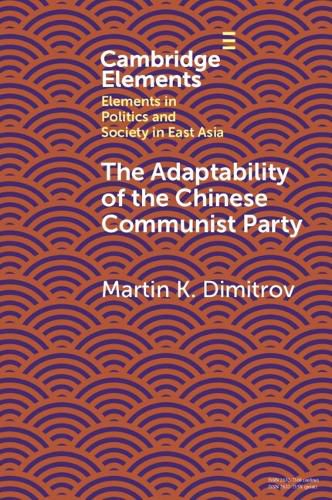Readings Newsletter
Become a Readings Member to make your shopping experience even easier.
Sign in or sign up for free!
You’re not far away from qualifying for FREE standard shipping within Australia
You’ve qualified for FREE standard shipping within Australia
The cart is loading…






The Chinese Communist Party (CCP) celebrated its one-hundredth birthday in 2021. Its durability poses a twofold question: How has the party survived thus far? And is its survival formula sustainable in the future? This Element argues that the CCP has displayed a continuous capacity for adaptation, most recently in response to the 1989 Tiananmen protests and the collapse of communism in Europe. As the CCP evaluated the lessons of 1989, it identified four threats to single-party rule: economic stagnation; socioeconomic discontent; ideological subversion; and political pluralism. These threats have led to adaptive responses: allowing more private activity; expansion of the social safety net; promotion of indigenous cultural production; and rival incorporation into the party. Although these responses have enabled the CCP to survive thus far, each is reaching its limit. As adaptation stagnates, the strategy has been to increase repression, which creates doubt about the ongoing viability of single-party rule.
$9.00 standard shipping within Australia
FREE standard shipping within Australia for orders over $100.00
Express & International shipping calculated at checkout
The Chinese Communist Party (CCP) celebrated its one-hundredth birthday in 2021. Its durability poses a twofold question: How has the party survived thus far? And is its survival formula sustainable in the future? This Element argues that the CCP has displayed a continuous capacity for adaptation, most recently in response to the 1989 Tiananmen protests and the collapse of communism in Europe. As the CCP evaluated the lessons of 1989, it identified four threats to single-party rule: economic stagnation; socioeconomic discontent; ideological subversion; and political pluralism. These threats have led to adaptive responses: allowing more private activity; expansion of the social safety net; promotion of indigenous cultural production; and rival incorporation into the party. Although these responses have enabled the CCP to survive thus far, each is reaching its limit. As adaptation stagnates, the strategy has been to increase repression, which creates doubt about the ongoing viability of single-party rule.